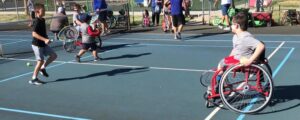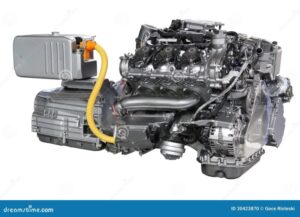
Adaptive sports innovation is transforming the landscape of athletics, making it more inclusive and accessible for everyone. As technology advances, new equipment and assistive devices are emerging to enhance the capabilities of athletes with disabilities, allowing them to compete at higher levels than ever before.
This movement is not just about the gear; it encompasses a legal framework that aims to protect the rights of these athletes while promoting a diverse range of sports, from martial arts to motorsports. As we delve deeper into this fascinating topic, we’ll explore the latest innovations, the regulatory challenges, and the exciting variety of adaptive sports available today.
Adaptive Sports Technologies

Recent innovations in adaptive sports technologies have revolutionized the way athletes with disabilities engage in sports. These advancements ensure that individuals can enjoy competitive and recreational activities that are tailored to their unique needs. The integration of technology into adaptive sports not only promotes inclusivity but also enhances performance, making sports more accessible and enjoyable for everyone.The latest adaptive sports equipment includes wheelchairs designed for specific sports, such as basketball or tennis.
These wheelchairs are built with lightweight materials and specialized designs to improve maneuverability and speed. Additionally, prosthetics and orthotics have seen remarkable advancements, allowing athletes to perform at levels comparable to their able-bodied counterparts. For instance, running blades enable amputee athletes to sprint with agility, while specialized grips and handles adapt to various sports, ensuring comfort and efficiency.
Wearables and Performance Tracking in Adaptive Sports
Wearable technology plays a critical role in tracking performance metrics in adaptive sports. These devices provide real-time data on heart rate, speed, distance, and other vital statistics, enabling athletes and coaches to optimize training regimens. The integration of wearables into training routines offers an insightful approach to enhance performance, monitor recovery, and prevent injuries.Wearables such as smartwatches and fitness bands are increasingly designed with adaptive athletes in mind.
Key features include:
- Water resistance for aquatic sports, allowing athletes to track metrics while swimming.
- Customizable interfaces that accommodate different disabilities and user preferences.
- GPS tracking for outdoor sports, providing accurate distance measurements and route mapping.
- Biofeedback capabilities that help athletes understand their physical responses during training.
The importance of this technology lies in its ability to provide adaptive athletes with feedback that can lead to improved performance and a better understanding of their own capabilities.
Assistive Devices Enhancing Participation
Assistive devices are essential for improving participation in various sports for athletes with disabilities. These devices not only enhance performance but also foster independence and confidence among athletes. Examples of such devices include:
Adaptive Bicycles
These bikes are modified to accommodate various disabilities, featuring hand pedals, reclined seating, and stable frames for added safety.
Exoskeletons
Wearable robotic suits that assist with mobility, allowing individuals with lower limb disabilities to walk or run in a more natural manner.
Specialized Surfboards
Designed with buoyancy aids and handles, these boards help individuals with disabilities enjoy surfing while ensuring safety and ease of use.
Goalball Equipment
This sport, specifically designed for visually impaired athletes, includes tactile balls and sound-emitting devices, enhancing the gaming experience.The introduction of such innovative assistive devices is vital for increasing opportunities for participation in sports, encouraging athletes to challenge themselves and expand their horizons.
Legal Frameworks and Regulations
The legal frameworks governing adaptive sports are essential for ensuring equal participation and protecting the rights of athletes with disabilities. These laws aim to create an inclusive environment where all individuals, regardless of their physical capabilities, can engage in sports activities. Understanding these regulations at local, national, and international levels highlights the ongoing efforts to promote adaptive sports and the challenges that still exist.At the local, national, and international levels, various legal frameworks and regulations play a vital role in the development and support of adaptive sports.
Key legislation includes the Americans with Disabilities Act (ADA) in the United States, which prohibits discrimination against individuals with disabilities in all areas of public life, including sports. Similarly, the United Nations Convention on the Rights of Persons with Disabilities (CRPD) emphasizes the right of individuals with disabilities to participate in sports on an equal basis with others. Other countries have their respective laws, such as the Disability Discrimination Act in the UK or the Persons with Disabilities Act in Canada.
While these laws establish a foundation for inclusion, they also face challenges in enforcement and application in various contexts.
Challenges Faced by Athletes with Disabilities
Despite the presence of legal protections, athletes with disabilities often encounter significant challenges that can impede their participation in sports. These challenges may arise from various factors, including accessibility issues, insufficient funding, and lack of awareness among organizations.
- Accessibility Issues: Many sports facilities remain inadequately equipped to accommodate athletes with disabilities. This lack of accessibility can deter participation and inhibit the training of adaptive athletes.
- Limited Funding: Adaptive sports programs often receive less funding compared to traditional sports, leading to fewer resources available for training, equipment, and competing opportunities.
- Awareness and Understanding: There is often a limited understanding of adaptive sports within the general public and even among some sports organizations, leading to stereotypes and misconceptions that can marginalize athletes with disabilities.
Comparison of Regulations in Adaptive Sports and Traditional Sports
The regulations governing adaptive sports differ in certain aspects from those of traditional sports, primarily concerning inclusivity and the specific needs of athletes with disabilities. While traditional sports have well-established rules and frameworks, adaptive sports often require tailored regulations that address the unique challenges faced by athletes.
- Inclusivity Standards: Adaptive sports regulations tend to emphasize inclusivity, seeking to provide equal opportunities for athletes with varying levels of abilities. Traditional sports regulations may not always accommodate this diversity.
- Classification Systems: Adaptive sports often implement classification systems to ensure fair competition among athletes with different disabilities, a concept not typically found in traditional sports.
- Funding and Sponsorship Disparities: Traditional sports frequently attract more sponsorships and funding, which can lead to better facilities and training programs compared to their adaptive counterparts.
“Laws and policies must evolve to ensure equity and access in sports for all athletes, regardless of their abilities.”
Diverse Range of Adaptive Sports
Adaptive sports have evolved remarkably, allowing individuals with disabilities to engage in a wide variety of athletic activities. These sports not only promote physical fitness and well-being but also foster social inclusion and community bonding. By adapting traditional sports to meet diverse needs, athletes can experience the thrill of competition and the joy of participation.A vast array of adaptive sports exists, catering to different interests and abilities.
From martial arts to motorsports, the adaptations made enable individuals to participate fully and competitively. The following list highlights some popular adaptive sports, showcasing the diversity within this realm.
Variety of Adaptive Sports
Adaptive sports encompass a multitude of disciplines, each uniquely tailored to accommodate various physical challenges. The following categories illustrate the extensive range of adaptive sports available:
- Martial Arts: Adapted forms of judo, karate, and taekwondo allow individuals with varying disabilities to learn techniques while promoting discipline and self-defense.
- Motorsports: Events such as adaptive racing and wheelchair motocross provide thrilling experiences for athletes using modified vehicles or equipment.
- Team Sports: Sports like wheelchair basketball, sitting volleyball, and adaptive soccer have modified rules and equipment, ensuring inclusivity for athletes of all abilities.
- Water Sports: Activities such as adaptive swimming, kayaking, and sailing are modified to include specialized equipment like buoyancy aids and accessible vessels.
The adaptations made in team sports and water sports are crucial for enabling athletes with disabilities to compete effectively. For instance, in wheelchair basketball, the court dimensions and rules have been adjusted to facilitate play while ensuring safety and engagement. Similarly, adaptive sailing utilizes accessible sailboats equipped with features that allow individuals with mobility challenges to navigate the waters confidently.
Unique Features of Winter Sports and Track and Field Events
Winter sports and track and field events present unique opportunities for athletes with disabilities to showcase their skills. These sports often involve specialized equipment and adaptations that enhance performance while maintaining safety.In winter sports, disciplines like adaptive skiing and snowboarding are equipped with sit-skis and mono-skis designed for various levels of mobility. Para-Nordic skiing combines cross-country skiing and biathlon, where athletes utilize sit-skis or stand-up techniques, depending on their abilities.
The thrill of competition in these sports is palpable, as athletes tackle challenging terrains and demonstrate remarkable skill.Track and field events also have distinct adaptations. Wheelchair racing, for example, employs racing chairs specifically engineered for speed, while visually impaired athletes often use guides to navigate their lanes effectively. Events such as the long jump and shot put have been modified to allow wheelchair athletes to compete, showcasing their athleticism in a different light.
Adaptive sports have redefined the boundaries of athleticism, proving that with the right adaptations, everyone can participate and excel.
Closing Notes

In conclusion, adaptive sports innovation is paving the way for a more equitable and exciting future in athletics. By breaking down barriers through technology, legal support, and diverse sporting opportunities, we are witnessing a remarkable evolution in how sports are experienced and enjoyed by all. It’s a thrilling time for athletes, advocates, and fans alike as we celebrate these advancements together.
Top FAQs
What are adaptive sports?
Adaptive sports are athletic activities modified to accommodate individuals with disabilities, enabling them to compete and enjoy sports just like their able-bodied peers.
How do wearables benefit adaptive athletes?
Wearables help track performance metrics such as heart rate, speed, and distance, allowing adaptive athletes to monitor their progress and optimize training.
Are there competitions specifically for adaptive sports?
Yes, there are numerous competitions and events specifically dedicated to adaptive sports, including the Paralympics and various local and national championships.
What types of equipment are used in adaptive sports?
Adaptive sports utilize specialized equipment such as handcycles, wheelchairs, adaptive skis, and customized prosthetics to enhance participation and performance.
How can I get involved in adaptive sports?
You can get involved by reaching out to local adaptive sports organizations or clubs which offer programs and resources for athletes of all abilities.





